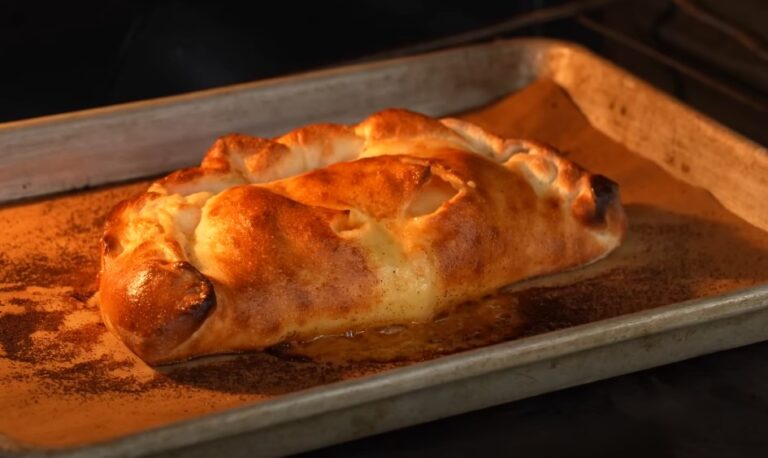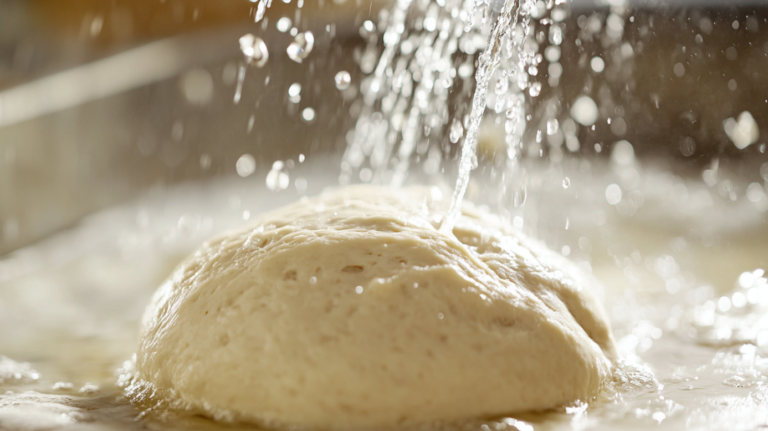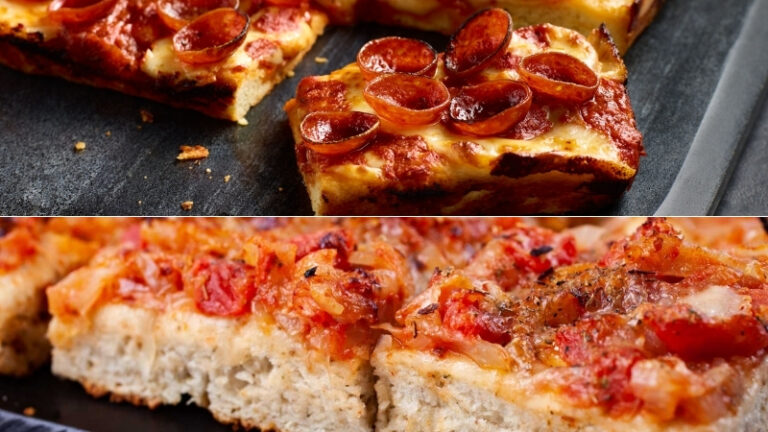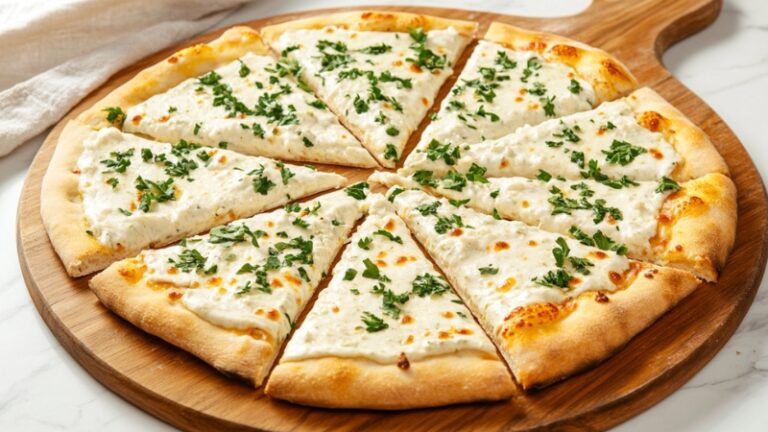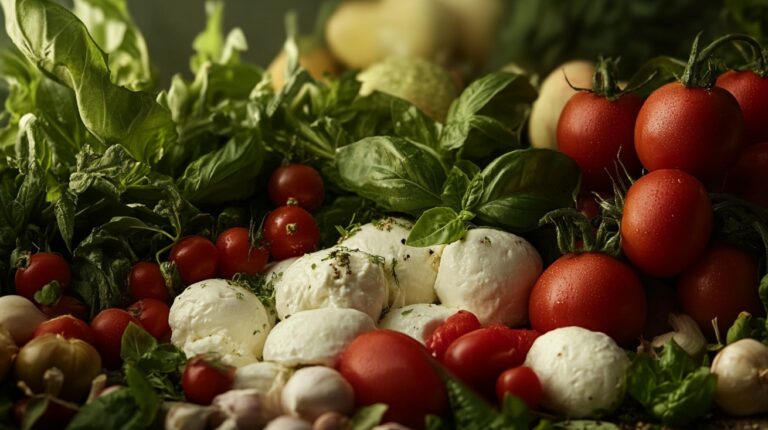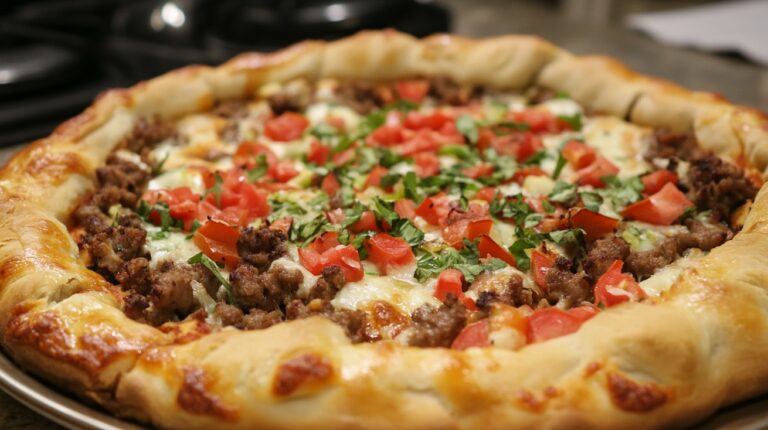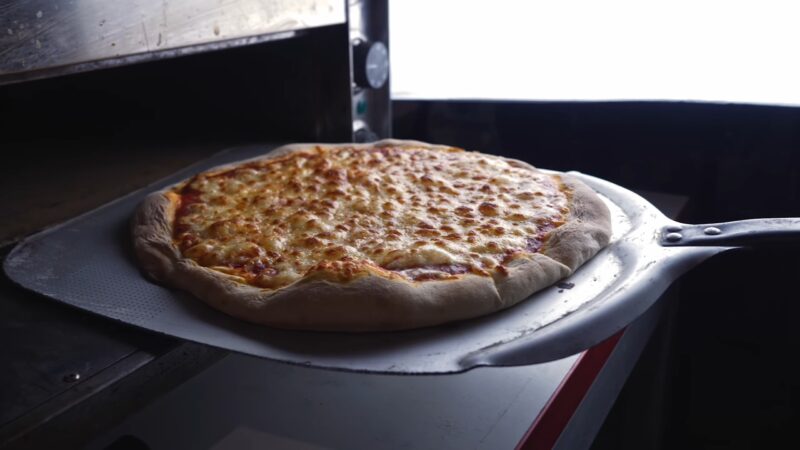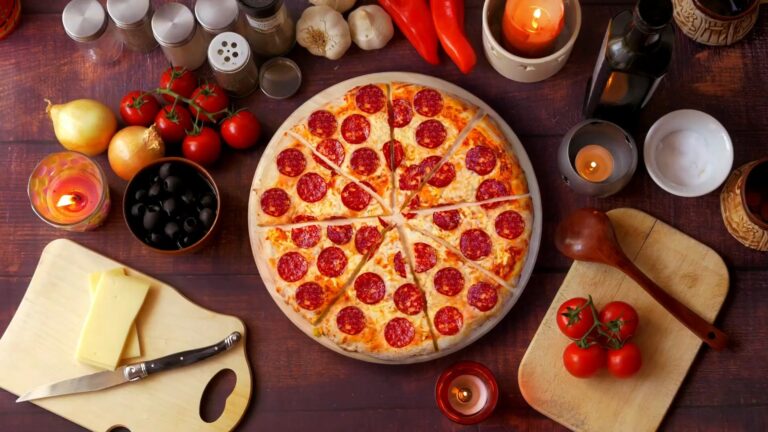As a chef, I know that using the right tools is crucial for creating exceptional pizza at home. And when it comes to pizza-making, a pizza peel is a must-have tool. In this guide, I’ll explain how a pizza peel can greatly enhance the whole process.
Table of Contents
ToggleWhy Do We Need Pizza Peel?
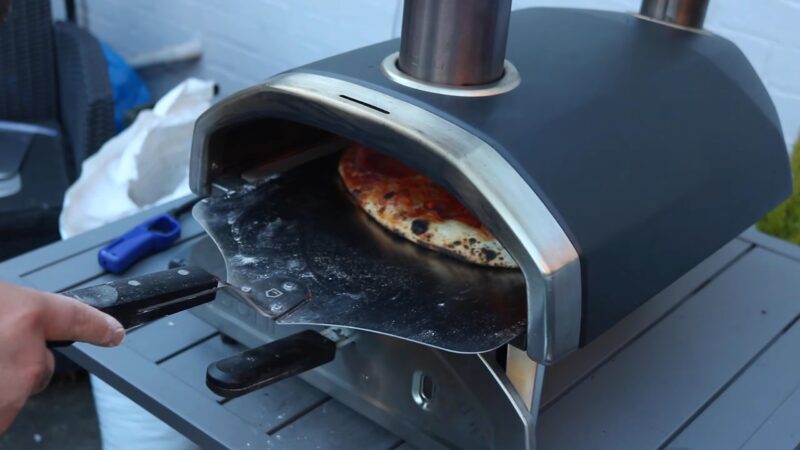
It’s really helpful because it lets you handle the pizza without getting too close to the hot oven, which keeps you safe from burns. Plus, it helps maintain the shape of the pizza and keeps the toppings evenly distributed as you slide it into the oven. The long handle of the peel is great because it protects your hands from the high heat of the oven, which can get really hot, like over 500 degrees Fahrenheit.
Using it can also improve the quality of pizza. If you use a wooden peel, it absorbs moisture from the dough and helps prevent the sticking. This is important because it keeps the pizza in shape and prevents the toppings from getting messed up when you transfer it. On the other hand, metal peels are useful for rotating and taking out the pizza from the oven. They’re thin and strong, so it’s easy to slide them under the pizza to quickly rotate or remove it.
When you use it correctly, it can really make a difference in the texture and taste. It helps the pizza cook evenly, which is important for getting a crispy crust and perfectly cooked toppings.
Should We Buy Both Metal and Wooden Peels?
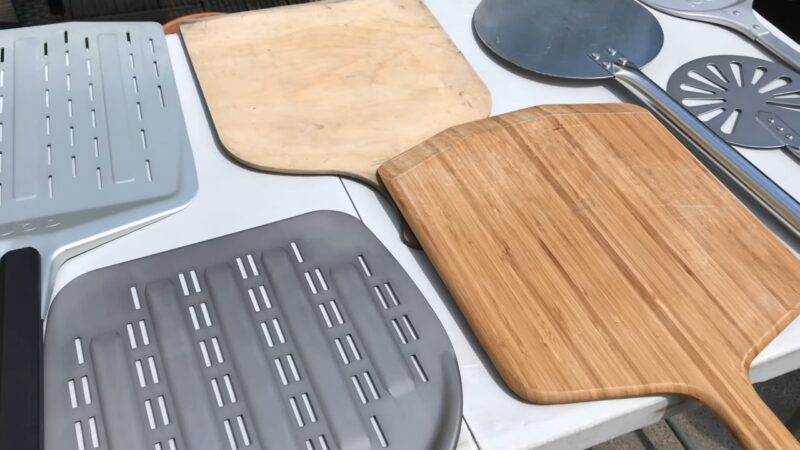
If you’re wondering whether you should invest in both metal and wooden pizza peels, it depends on how often you make pizza and what you’re looking to achieve. Each type has its strengths.
Wooden peels are great for getting the pizza into the oven. Wood absorbs moisture from the dough, preventing sticking. This is especially helpful when you need to slide a raw, topped pizza onto a hot stone or oven deck. The slightly rough surface of a wooden peel provides a good grip for handling the dough.
On the other hand, metal peels shine when it’s time to rotate and retrieve the pizza from the oven. They are thinner and more rigid, making it easy to slide them under the pizza for even baking or to remove it’s when it’s done. The smooth surface allows for smooth maneuvering without damaging the crust.
And if you are making pizza more often, getting both of these is actually the best choice. That way, you won’t need to compensate for the lack of either the ability to slide the dough or to sticking issues.
A lot of you might be wondering whether a metal one can be a perfect all-in-one tool. While it may seem so to beginners, keep in mind that placing the pizza in the oven with this one can be a real problem. It’s slippery, which is the biggest issue, and it also won’t get all that extra moisture that I already mentioned as one of the key benefits of having a wooden peel.
Is There a Good Alternative for This?
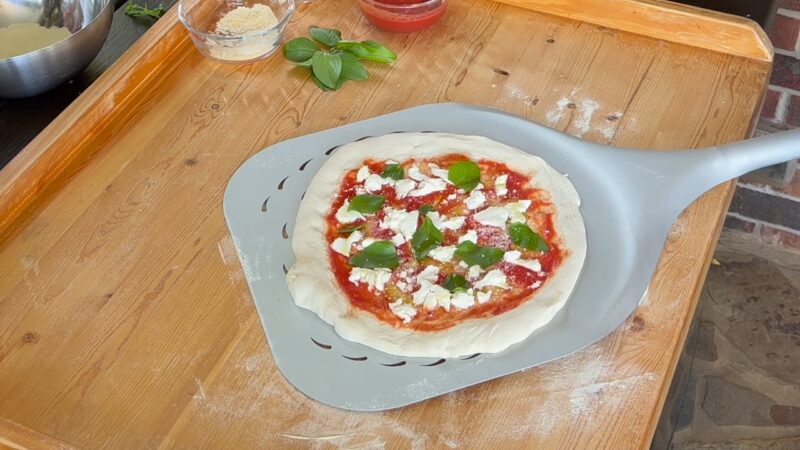
Yes, there are alternatives to traditional metal and wooden pizza peels that can be effective for home pizza makers. One popular option is a composite peel, which combines materials like resin and fiberglass. These peels offer a good balance between the non-stick properties of metal and the moisture-absorbing qualities of wood.
Composite peels are lightweight, durable, and often less sticky than metal, making them a good choice for launching pizzas. They also don’t absorb odors or bacteria, making them easier to clean and maintain. Some models feature a textured surface that mimics the slight roughness of wood, helping to prevent the dough from sliding off too easily.
Another alternative is silicone pizza mats, which can be used directly on a baking tray. You prepare the pizza on the mat and then transfer the entire tray to the oven. While not a peel in the traditional sense, these mats can simplify the process by eliminating the need to slide the pizza off a peel at all.
For those who occasionally make pizza at home and do not want to invest in a peel, using parchment paper is a practical solution. You can assemble the pizza on a sheet of parchment paper and slide it along with the paper onto your baking stone. The paper can be removed midway through baking to allow the bottom of the pizza to crisp up directly on the stone.
Conclusion
Each type of peel, whether wooden, metal, or composite, brings specific benefits.
Wooden peels help launch the pizza by absorbing moisture from the dough, preventing sticking.
Metal peels are ideal for retrieving pizzas due to their sturdy and thin design, making it easy to slide under the pizza.
For those looking for a versatile option, composite peels provide a good balance between the two.
Additionally, alternatives like silicone mats or parchment paper can also be effective, especially for those who are not using the oven every day.

